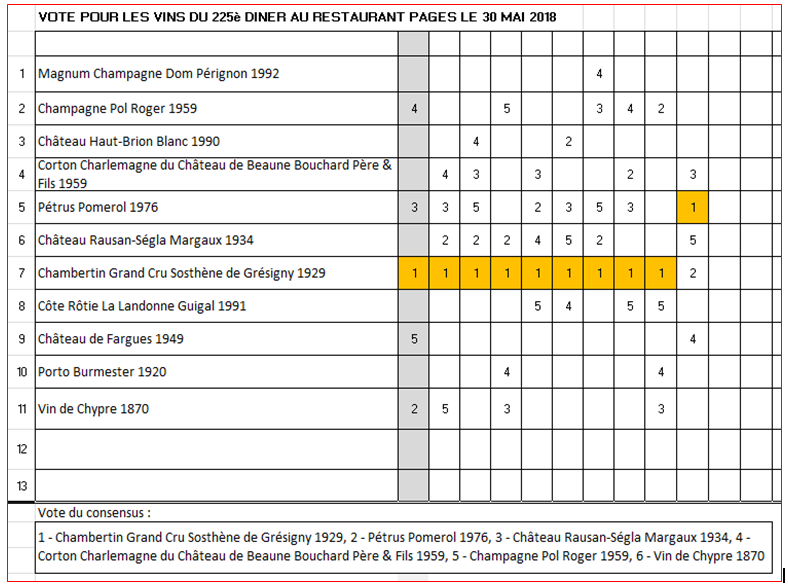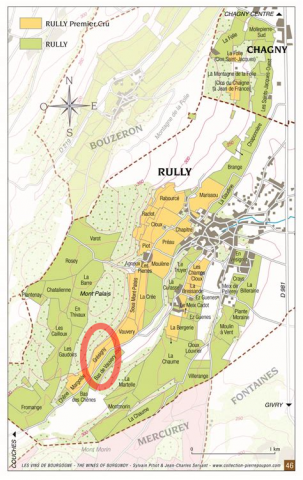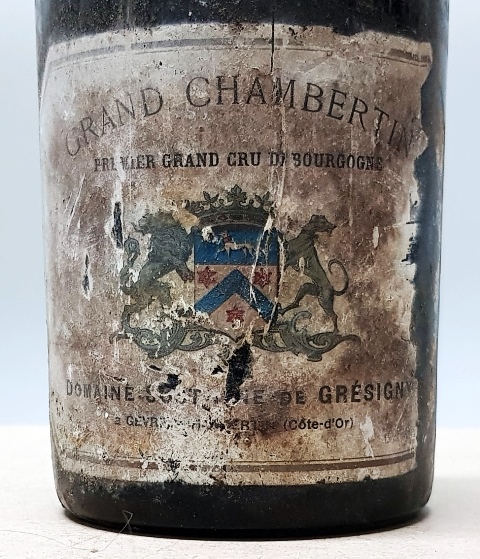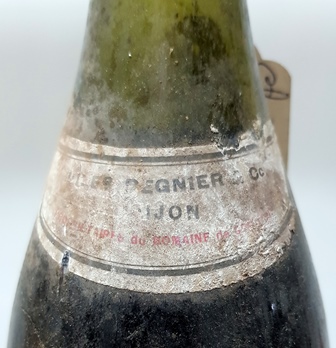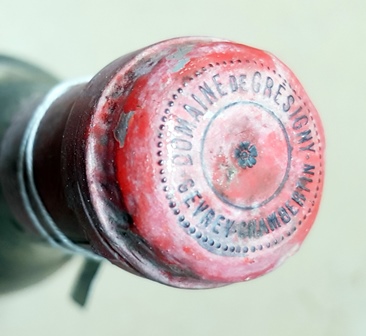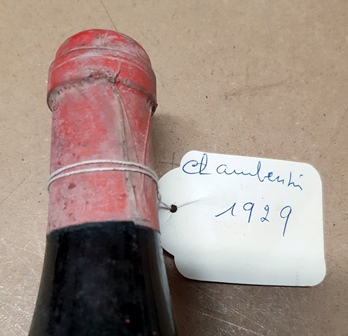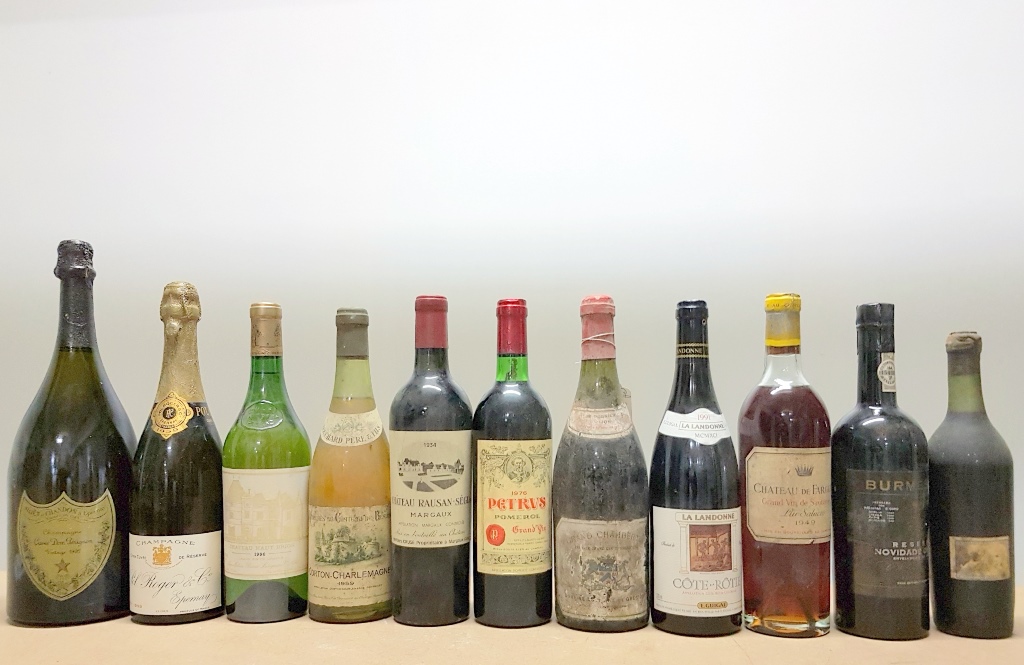This dinner is held at Pages Restaurant. Given the smallness of the restaurant’s cellar, I deliver the wines on the day of the dinner, at 2 pm. Then chaining appointments, I find myself with a friend and a winemaker at the bistrot 116 Pages, drinking a Champagne Rosé Selosse disgorged in 2015. Arrived too cold, it is more cider than champagne and gradually it will flourish finally offering what should be Selosse rosé champagne, strong, impregnating and vivacious.
I am hard at work to open the bottles of dinner at 5 pm. An Englishman who will attend dinner tonight and recently attended the last session of the Academy of Ancient Wines is by my side to observe what I am doing. Even if some corks break in a few pieces, I do not have any major problems. Some perfumes are of stunning nobility, like Cyprus 1870, bomb of pepper and spices, the Fargues 1949 which has the majesty of very large Sauternes and the Petrus 1976, which is in the definition of the perfect Petrus. I said before opening the wines to Lewis that what best represents my passion for wine is the Grand Chambertin 1929. When I open the bottle, the sensuality of the discreet but promising fragrance moves me. We will see later what it is at the time of the votes. The white Haut-Brion 1990 has a rather discreet nose compared to what I expected. The only uncertainty is the Rausan-Ségla 1934 which could have a hint of cork. We will see.
We are ten, three of whom are new, with an overwhelming male majority against my will. The only woman registered phoned an hour before the meal to announce to the restaurant that she could not come because of a robbery she had just suffered. I almost got her to come anyway, but after saying yes she said no. She was replaced at short notice by a young American student at Le Cordon Bleu School whose director is at our table. There is an American, an English, a Belgian, a Lyonnais and six Parisians around the table.
The menu was developed with Chef Teshi and his team a few days ago and my suggestions were accepted. It is on the realization that the dinner was prodigious. The appetizers are: ceviché of ‘lieu jaune’ / iced carrot / chervil tuber / parmesan and beetroot.
The menu is: Royal sea bream carpaccio, caviar Daurenki, lemon caviar / ‘pouces-pieds’, mayonnaise with parsley and garlic / abalone, risotto, sea lettuce / red mullet, red wine sauce / lobster blue breton, sauce civet / veal sweetbreads, chanterelles / pigeon from Vendée, salmis, artichoke with barigoule, cherry / stilton / mangoes, fresh / financial almonds.
It’s warm weather so it is nice to have an aperitif on the sidewalk, Naoko, Teshi’s wife, coming to bring us appetizers. Champagne Dom Pérignon Magnum 1992 when served is a bit imprecise and short, as if he had a tiny trace of cork. But in fact it snorts, warms quickly because it is very warm in Paris and the champagne takes off and really looks like a beautiful Dom Pérignon, long, with a well-controlled acidity and generous yellow fruit flavors. It’s especially the sweet ice cream carrot that expands the champagne.
We go to the table and on the sea bream carpaccio we drink Champagne Pol Roger 1959. Its color is beautiful light amber, the bubble is almost invisible but the sparkling is there. This champagne combines with happiness unparalleled sweetness with a rare energy. He is noble and conquering and the agreement is good. We did not all have the same proportion of lemon caviar. My plate had a lot and others little and lemon caviar in high doses fights against champagne. But overall this champagne is exciting and joyful.
Château Haut-Brion Blanc 1990 is a legendary wine. I expected a lot and I find a real lack of power. It remains big with the beautiful bitterness of the wines of Graves, but it is not flamboyant and the demonstration will be given by the white who will follow it. The ‘pouces-pieds’ are delicious, original and it’s not the mayonnaise that suits them best, but a delicate vinaigrette that excites the Haut-Brion.
What abalone, these abalone! A marvel of taste. So, the Corton Charlemagne Bouchard Father & Son 1959 is totally at ease, glorious, serene, the real crooner. It is for my taste the risotto that propels Burgundy to an exceptional level of emotion.
It’s one of my quirks to associate Pétrus with red mullet. This will be the case again. The nose of Pétrus Pomerol 1976 was magical at the opening. He is even more so. And this rich pomerol is heavy with truffles and charcoal. It is a glorious and distinguished Petrus. The mullet is beautifully cooked, its skin is a treat and the agreement shows once again its relevance. What a beautiful Petrus!
I made suggestions for lobster and did not expect that they would be followed with such talent. I said that I much prefer the lobster body to the claws and now there is the body alone, without the slightest flourish, placed on a heavy sauce. And we are going to live one of those rare moments that I cherish: Château Rauzan-Ségla Margaux 1934 ‘is’ the sauce of lobster, like lobster sauce ‘is’ Margaux 1934. The continuity of taste is total. And the wine, for which I dreaded a possible taste of cork, is glorious. It is balanced, serene like the Corton-Charlemagne and all this is due to the long period of aeration of the wine. Powerful wine has no age, it is timeless. I would never have imagined that this wine that was reconditionned probably forty years ago would reach such a new perfection.
The Grand Chambertin Grand Cru Sosthène de Grésigny 1929 is a wine of Jules Régnier, owner of the estate Sosthène de Grésigny. My heart belongs to him because it is in the line of my passion to look for curiosities which can be placed on a par with, even above much more capped wines. This wine is charm and subtlety. Everything is velvet in him. The nose has charm and the mouth is of a total sweetness. It is at once the odalisque of Ingres for mad seduction and d’Artagnan for persuasion. The perfect calf sweetbread is discreet, because on a stage, it is appropriate to be able to emphasize the first role, the star of the show. How this wine does stir my heart! I’m thrilled and Banana Republic votes will show that I was not the only one.
The pigeon is a marvel, the artichokes are sweets and the cherry is the touch of genius that will excite the Côte Rôtie La Landonne Guigal 1991. This wine is a lord, heavy but freshness minty. This is the most successful year for this Landonne and since we have just gone back 62 years since the Chambertin, all this seems an absolute natural. We are all dazzled by so much culinary perfection.
Château de Fargues 1949 is so brown that it is almost black. At the opening he had a perfume of incredible complexity. It still has it and this warm wine is madly complex in the mouth. The agreement with stilton fat is superb and while we have already eaten well, we would have wished more. Sauternes is also paired with a mango and fresh almond dessert that showcases other facets of wine with incredible charm.
The Porto Burmester 1920 had a discreet nose at the opening. The nose is a little more radiant and it is in the mouth that everything is played. This port is all in refinement. He is delicate despite his power. He surfs on the tongue to show his fluidity. The financiers accompany him with happiness. He has palpitations of rare elegance.
The financiers will also accompany the 1870 Cyprus Wine and there is no better tenet than these little pastries. Cyprus is a pepper bomb. While it is rich in spicy flavors, it can give the impression of being dry. But the most mesmerizing is that it takes us to territories of unknown flavors. We find ourselves lying on a beach next to vahinés wearing fragrant flowers that sing soft and enveloping melodies like their perfumes. I like this trip in another dimension.
It is time to vote and we all have stars that shine in our eyes as we lived a unique moment. Each of the ten participants must vote for five favorite wines out of the eleven of the meal and what fills me with joy is that the eleven wines appear in at least one vote. The Chambertin Grand Cru Sosthène de Grésigny 1929 has an insolent score that I think I never had at one of my dinners: nine first-in-ten votes. Never. The other wine that was voted first is the Petrus by a single voter.
The consensus vote would be:
1 - Chambertin Grand Cru Sosthenes Grésigny 1929,
2 - Pétrus Pomerol 1976,
3 - Château Rausan-Ségla Margaux 1934,
4 - Corton Charlemagne Castle Beaune Bouchard Father & Son 1959,
5 - Champagne Pol Roger 1959,
6 - Wine of Cyprus 1870.
My vote is:
1 - Chambertin Grand Cru Sosthenes Grésigny 1929,
2 - Wine of Cyprus 1870,
3 - Pomerol Pétrus 1976,
4 - Champagne Pol Roger 1959,
5 - Château de Fargues 1949.
All the guests who had already participated in my dinners say that we are at a higher level than anything they have known. It must be said that all agreements have worked through the simplification of the recipies, which does not hinder talent. The presence of pouce-pieds and abalone at dinner was a pleasure because it is not every day that we eat. The most beautiful agreement was the symbiosis of Rausan-Ségla 1934 with the lobster sauce, so beautiful in its simplicity, followed for me by the risotto with Corton-Charlemagne 1959. The cherry on La Landonne is a whim I love and financiers on Porto and Cyprus are a piece of happiness.
The attentive guests brilliantly animated this meal held most often in English so that Lewis could participate in the debates. I am still amazed at the absolute success of this beautiful meal.
